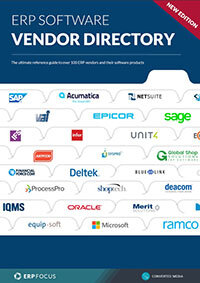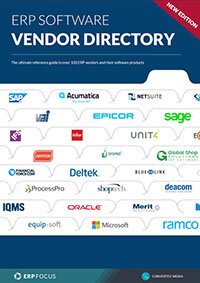What role can ERP play in the internet of things?
Today’s ‘internet of things’ (IoT) is defined by interconnectivity between machines, software and people, aka ‘hardware, software and wetware’; and while the assertion may appear to be a pretty straightforward definition, getting from ‘here to there’ is not nearly that elemental from an ERP software perspective.
Evolving transactions
Consider a straightforward legacy transaction associated with the purchase of a single food product. In the past a customer would finish lunch, give the waiter their credit card, swipe it across an electronic terminal or simply deliver cash, and once that process was complete and a receipt was tendered, the customer was out the door.
Recommended Reading: ERP Vendor Guide - Find an ERP vendor looking to embrace the IoT
Now, however, the process is considerably different, since in many places (even in semi-rural cities like mine) a customer utilizes a smart device as an electronic wallet for payment. These elements subsequently interact with a near field communications (NFC) device, push the purchase data to a local point-of-sale (POS) device integrated with a sales ERP module and, in turn, communicate with a merchant bank or third-party security server for final sales authorization. At that point, the customer’s food total is deducted from his/her account and is translated across the same network ending up on the restaurant’s corporate AR ledger. But wait, there’s more; since those direct transaction elements are also supported by both LAN and WAN infrastructures that secure and manage overall multi-point communications. At the end of the day, the whole process is nothing like what a transaction at old Grandpa’s Burger and Shake used to be.
ERP is built for the internet of things
The point of all of this is not to suggest that the hubris of technology can make a mountain out of a mole hill; there’s a method to this madness. Today’s commercial society craves deep demographic data, statistics, and information, which is where ERP comes in. Without the coalescent technical capability provided by our ERP systems, useful data can be easily lost; our previous scenario’s transaction elements will end up representing nothing more than a whole lot of nothing on the bottom line.
Today’s commercial society craves deep demographic data, statistics, and information, which is where ERP comes in.
To reprise the goal of ERP yet again; the technology is defined as a “…business process management system that allows an organization to use a system of integrated applications to manage the business and automate many back office functions related to technology, services and human resources.” In the context of this article, the role of ERP is to provide the collection, trapping, manipulation and conversion of raw data. These data processes lead to useful information that any individual enterprise operating in parallel with the IoT will be able to use to create more efficient processes, whether that is the connection of machines on the shop floor or the monitoring of environmental conditions in transit.
This assertion is not just a wild proposition since major ERP developers like Oracle and SAP are already in the midst of either building new integrated IoT channels to and from their ERP platforms, or have already done so. Consequently, the future of ERP IoT technology as a whole is bright, and rightly so.
Free white paper

ERP Software Vendor Directory
Put the most comprehensive ERP vendor directory on your desk today

Related articles
-

ERP migration steps (your ERP migration checklist)
How to construct the smoothest ERP migration plan possible
-

CMMC Compliance: What Aerospace and Defense Manufacturers Need to Know
Key insights on CMMC compliance, deadlines, and securing DoD contracts with CMMC 2.0 certificatio...
-

4 practical examples of the power of real-time ERP data
Discover the potential of real-time data with these practical examples from a range of industries.

